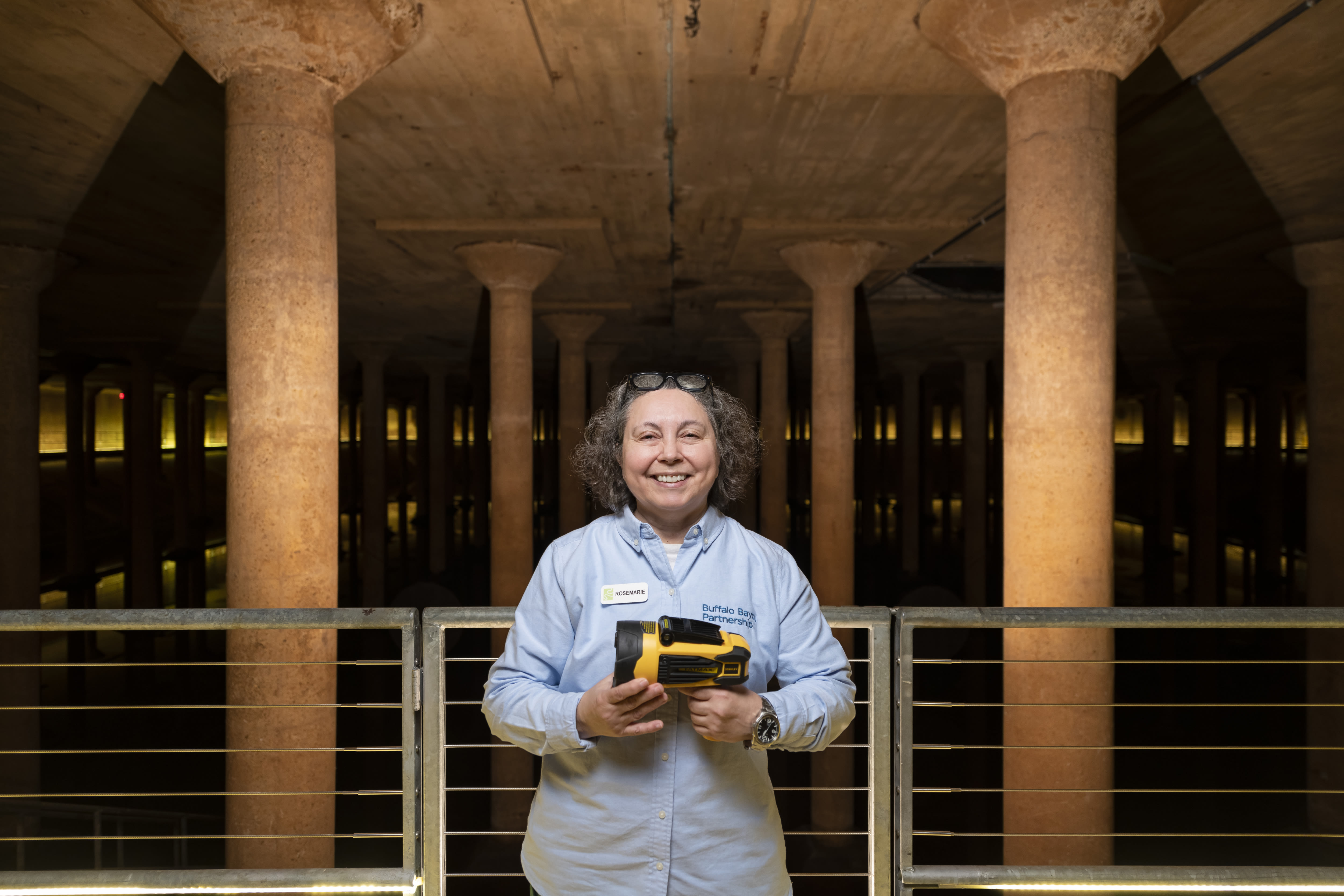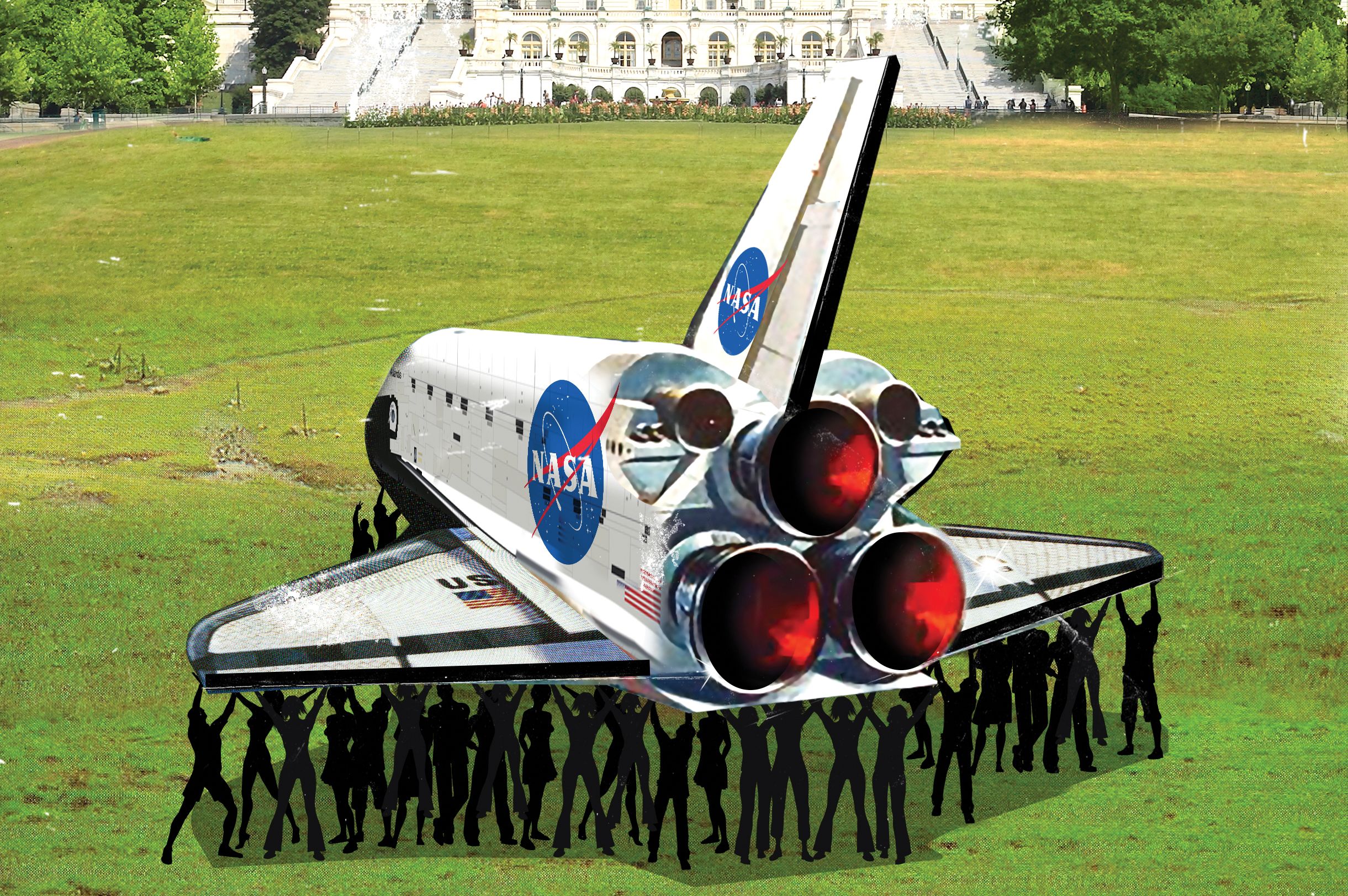
The Future of the Johnson Space Center Is Up in the Air
Feature illustration by Matthew Billington
The three men have traveled 1,400 miles from Houston to Washington, D.C. on a mission, and they’re not alone. Close to 100 citizens have descended on the capital to make the case for the country’s continued investment in its space program, as they do for three days each and every year. But today the agenda for these three is a little different. They’re not just advocating for the American space program—they’re advocating for Houston’s role in the American space program. And they’ve agreed to let Houstonia tag along with them through Washington’s corridors of power.
These utterly tireless men—who will troop six miles through the course of this rainy day in May—are Bay Area Houston Economic Partnership President Bob Mitchell, Houston City Council Member Dave Martin, and Texas State Representative Dennis Paul. All are Republicans charged in some way with protecting the Johnson Space Center, and all are here on behalf of Citizens for Space Exploration, a multistate nonprofit organization based in Houston.
Maybe they’re preaching to the choir a little. Each of today’s eight meetings will be with politicians from Texas. Still, they might need a little reminder of just how important the Johnson Space Center is to Space City.
Usually these meetings are kept purposefully vague. Nobody with Citizens for Space Exploration is supposed to be pushing for support for any particular one of the 10 centers that make up the civil space program. But that’s out the window as they file into U.S. Representative Brian Babin’s office, which is decked out with a wall of framed NASA posters.
“What can I do for you, Bob?” Babin asks, turning to the group, which is seated around a long conference table.
Without even glancing down at the papers in front of him, Mitchell launches in. “Well, it’s like this,” he says. “We don’t fly the space shuttle. We only use Mission Control for the International Space Station. The other side of it hasn’t been used in years. The Johnson Space Center is the home of human spaceflight, but we’re not getting what we should be getting. We feel we’re being squeezed out.”
The Johnson Space Center, located in the southeast corner of Houston, is in Babin’s district, and as chairman of the House Subcommittee on Space, Technology, and Science, he’s got tremendous pull when it comes to the space program. The position “gives him the ability to make things happen,” Mitchell later explains.
What’s frustrating is that while the JSC is struggling, things seem to be going well for NASA as a whole. The agency finally has a new leader. In April former U.S. Representative Jim Bridenstine, an Oklahoma Republican, was confirmed as its administrator, replacing Charles Bolden more than a year after the former astronaut retired. Engineers are making progress constructing the Orion capsule and Space Launch System rocket for the Mars jump. There’s even been a slight bump in funding.
Every new White House administration has the power to dictate NASA’s missions, and President Donald Trump has repeatedly indicated that he wants to see the U.S. going back to the moon, constructing a lunar-orbiting space station, and reaching Mars. Trump has proposed increasing the agency’s 2019 budget to $19.9 billion from $19.5 billion, while Congress is looking to up the ante even more, appropriating $21.5 billion.
Locally, though, there’s growing concern that other centers across the country—the Marshall Space Flight Center in Alabama, the Jet Propulsion Laboratory in California, and the Kennedy Space Center in Florida—are getting ahead of the Johnson Space Center.
The signs are subtle, Mitchell explains. It’s the fact that Houston has to share the Commercial Crew Program—a joint project of NASA, SpaceX, and Boeing to build commercial spacecrafts that will launch astronauts into low-Earth orbit from U.S. soil—with Kennedy Space Center. It’s the way NASA headquarters in D.C. issued a request for bids to put together the Orion modules—which astronauts will train on before making the first manned launches of the spacecraft, slated for the 2020s—without placing the project at the JSC, instead leaving its location open-ended. “And everyone knows that when there’s anything to do with astronauts or astronaut training, that is supposed to be right there in Houston,” Mitchell tells Babin.
“We need to make sure the Johnson Space Center is on the radar screen, and that there is a serious conversation about what they are historically in charge of, human spaceflight,” adds Martin, Mitchell’s wingman, whose district includes JSC.
The Johnson Space Center has been the home of human spaceflight for more than 50 years, ever since Houston welcomed the Mercury Seven—the very first seven astronauts to travel to space, as part of Project Mercury—with an enormous barbecue and a special performance by the famed stripper Sally Rand in Sam Houston Coliseum. But there are comers who want what Houston has, who have been working to carve off some of the programs, funding, and jobs for centers in their own parts of the country.
As his aides take notes, Babin nods and promises he’s keeping an eye on things. But he reminds Mitchell, Martin, and Paul that he can’t focus solely on Houston’s interests. “I sympathize with Johnson Space Center, but as subcommittee chairman of space, I have to work on behalf of the entire space program,” he says. “I’ll do my best, though.”
Mitchell closes his gray folder, leans across the table to grasp Babin’s hand, and thanks him for the time. Considering the distance they’ve traveled and the months of planning that went into setting up these meetings on Capitol Hill, the conversation is short, and almost shockingly casual.
Within seconds the trio’s moving through the marble halls again, heading to their next appointment. “I think that went well,” Paul says, puffing a little to keep pace with Martin as they emerge on the steps of the U.S. House of Representatives’ Rayburn building. “Wait. Where’s Bob?”
He’s already standing at the curb, holding open a taxi door and waving for the group to hurry up.
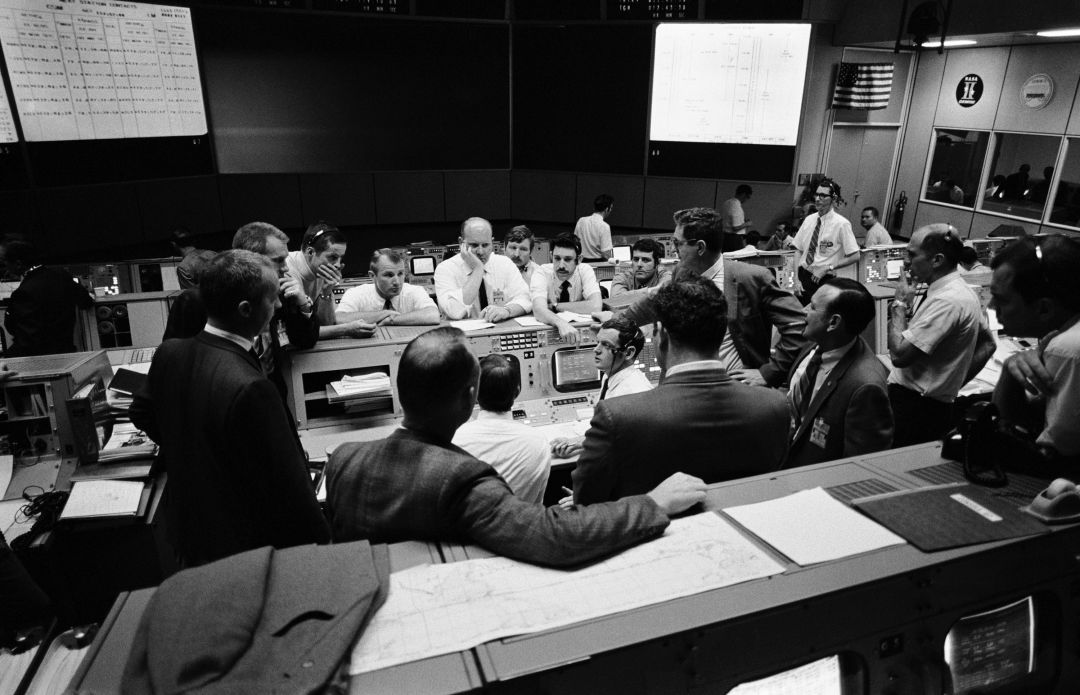
Houston's Mission Control (pictured during the Apollo 13 emergency) was once the heart of the U.S. space program.
Image: Courtesy of NASA
The taxi splashes through puddles as rain comes pelting down. “You know, the Johnson Space Center would never have happened if LBJ hadn’t been in there working for it,” says Paul from the backseat of the cab. Paul is an engineer by training, the only one in the Texas Legislature since his election in 2015—the JSC is also in his district—and a history buff to boot. He’s devoured books on Lyndon Johnson, the space program, and how Houston got a piece of the action. It’s a story all three advocates know by heart.
“It certainly helped that he had Sam Rayburn, the Speaker of the House, on his side, and Albert Thomas sitting on appropriations,” Martin adds.
“Lord, though, there was nothing like LBJ to get things done. If he wanted something, he’d just push and push until he got it,” Mitchell says, laughing and shaking his head.
When Mitchell started making these trips 18 years ago, he knew none of this. In fact, he knew almost nothing about space exploration. As a kid growing up outside of Houston, he’d marveled, along with the rest of the world, at Neil Armstrong taking those first steps on the moon, but he never gave much thought to how it all happened. He had never considered the years of research and training, let alone the funding and the politics, that had allowed those things to occur, putting Houston at the center of the show.
But when he grew up, Mitchell spent years working at Grumman Aerospace, an Apollo-era NASA contractor, before taking a job with the Bay Area Houston Economic Partnership and setting out to understand what went on at the JSC. He learned fast, and soon everyone else deferred to him when there was a question about the space program.
Mitchell has always had an uncanny ability to read people, something that makes him particularly good at what he does. And even after close to 20 years of traveling to Washington, he’s so thoroughly immersed in his job—and his objective of pushing for congressional support for the JSC—that he has yet to see any part of D.C. that isn’t located between the airport, his hotel, and Capitol Hill.
“The JSC is key to our region,” Mitchell says. “So many jobs are tied to the center being here and being a strong presence in the space program. It’s vitally important that the JSC maintains its core competency, that it remains the home of human spaceflight. We want to be part of the decisions. We want to make sure we have relevance, and that we are part of the decision-making process in Washington, D.C. And that’s why we do this.”
NASA’s purpose is to send people into, and explore, space. But as Mitchell well knows, its existence is decidedly earthbound, tethered to support from both the White House and Congress ever since President Dwight Eisenhower responded to the Soviet Union’s launch of Sputnik by creating the agency in 1958.
Other experts agree. “NASA is politics, and it always has been, as an instrument of national policy, as an instrument of regional policy, and as a matter of very high interest to those members of Congress who have constituent interests in what NASA does,” John Logsdon, a space historian and founder of the Space Policy Institute at George Washington University, says. “The very foundation of NASA is political. It’s not some abstract research organization. The decisions that are made about it are always being influenced by politics.”
That includes the reason the Johnson Space Center, originally known as the Manned Spacecraft Center—was put in Houston in the first place. The year that Kennedy proposed traveling to the moon, 1961, it happened that U.S. Senator Albert Thomas, a Democrat and protégé of Johnson’s, was the chairman of the Senate Appropriations Committee. And he made it clear to the administration that if they wanted funding for their space program, Houston would need to do well by it. “The road to the moon is through Houston,” Thomas said at the time.
The reason he wanted the center? Because the builder George R. Brown, along with officials at Humble Oil (now ExxonMobil), Rice University, and a clutch of real estate developers, saw an opportunity to turn miles of soggy farm and ranch land 20 miles southeast of the city into prime real estate, with the space program at the center of the development. Humble Oil donated the land to Rice, and university officials sold it to the U.S. government for $20, according to the deed.
Even after Hurricane Carla slammed into the Texas coast—depositing a shrimping boat at the exact site where the main building would be constructed, smack in the middle of roughly 1,600 acres of swampland—the plans went ahead.
The Manned Spaceflight Center put Houston on the map as more than a rough-and-tumble oil town. Hundreds of scientists, engineers, and aerospace experts flocked to the Bayou City to help train astronauts, launch them into space, and land them on the moon. The population in the Clear Lake area soared, with land around the center more than tripling in value in less than a decade.
Houston capitalized on its new position. In 1965 the city built the Astrodome, and when our baseball team started playing there, we renamed them the Astros. In 1967 Houston itself adopted the official nickname Space City, and we christened our basketball team the Rockets a few years later. It was woven into our identity, impossible to ignore.
For decades afterward, the leadership of the JSC—renamed for Johnson a few months after he died, in 1973—kept the center in the spotlight. “When I came to the Johnson Space Center, we had leadership that was really able to come up with a vision of where we wanted to go and what we wanted to do,” says George Abbey, the director of the center from 1996 to 2001. “And the JSC was in the center of that. The Johnson Space Center was really leading the way when it came to human spaceflight.”
The Texas congressional delegation contributed to those efforts. For years Houston had solid backers in Congress working to ensure that the JSC maintained its role. Even after the Apollo days faded, there was never a question about whether the JSC would oversee the Skylab space station or the Space Shuttle human spaceflight program, or that the JSC would run the International Space Station after its 1998 launch.
In 1993 U.S. Representative Jack Brooks, the cigar-chomping Democrat from Beaumont who’d represented his district for decades and was one of the most senior members of Congress, swept in to stop a move to kill the ISS before its construction, saving it by a single vote. That incident, by the way, inspired the Bay Area Houston Economic Partnership to help start Citizens for Space Exploration.
“It would have been devastating to Johnson to lose that program and Jack knew it, because he wanted to know what was going on, he kept himself informed, and he saved it and saved us,” Abbey says.
But Brooks was voted out of office a year later—his Republican-dominated district was incensed over his support of a gun regulation—and replaced by Steve Stockman, who was so low on the GOP totem pole, he never acquired much power during his time in Congress. (He’s since been found guilty on 23 counts of federal fraud.)
Nobody ever rose up to replace Brooks. Kay Bailey Hutchison became a devoted JSC advocate when she was elected to the U.S. Senate, but the Dallas Republican couldn’t block the moves to cancel the Space Shuttle program (2004), drop the lunar exploration program known as Constellation (2010), and cut JSC funding (2010).
Meanwhile, the JSC leadership after Abbey was less inclined to push back on cuts and project cancellations. “I was raised up under Chris Kraft and other leaders who, if they thought something wasn’t on the right track, they’d say so,” Abbey says. “They don’t have that kind of leadership now. They do what headquarters tells them to do, and if they think there’s something wrong about what they’ve been told to do, they stay quiet.”
NASA spokesman Kelly Humphries disagrees with the view that the JSC is under threat, noting that the center still houses Mission Control, oversees the ISS, and will play an important role in assembling the Orion spacecraft that will help send humans further into space than we’ve ever ventured—all evidence that it's doing just fine. “Johnson Space Center is a vital part of human spaceflight activities and of NASA as a whole,” he says, "just as it always has been."
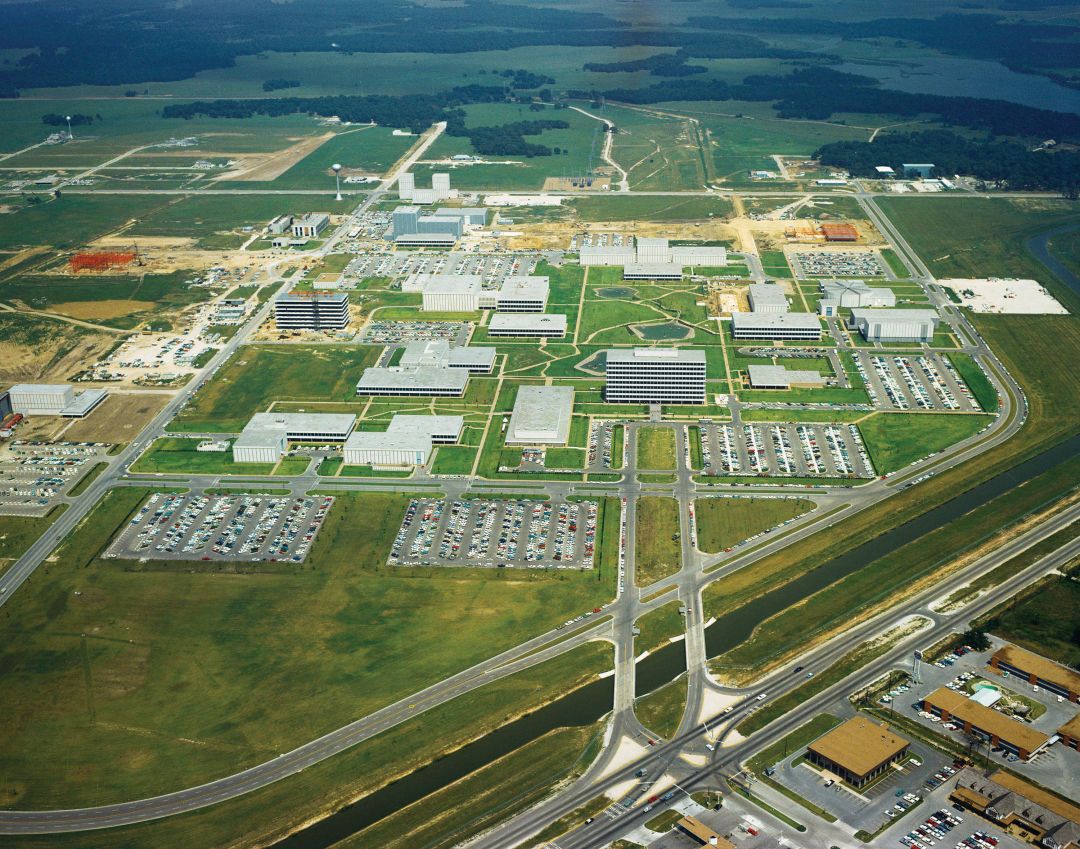
By 1965 the Manned Spacecraft Center was booming.
Image: Courtesy of NASA
Sitting at a cafeteria table in the U.S. House of Representatives’ Longworth building, Martin loosens his tie and shakes his head. “You know, sometimes people in Houston don’t even realize we still have the Johnson Space Center? They think Space Center Houston is just a museum!”
Paul and Mitchell sigh, laughing a little at the thought.
Just 20 years ago, Johnson was the hub of human spaceflight endeavors in America, in charge of not only the ISS but the Shuttle Program, and overseeing all human spaceflight mission development, plus nearly a dozen smaller programs that were key to sending astronauts into space. But things have a way of changing when you’re subject to the whims of successive White House administrations, as well as varying levels of congressional support.
Under President John F. Kennedy, NASA went to the moon. Under President Barack Obama, the plan to go back to the moon—Constellation—was scuttled. The idea had been for Constellation to replace the Space Shuttle program, before that ended, leaving the JSC without a major spaceflight program to anchor it.
All of this hit the JSC hard. By 2015, the center's funding had been cut by $1.5 billion, and it went from having more than 18,000 employees—both federal workers and contractors—in 2011 to a little more than 10,000 employees in 2016, according to the 2011 Bay Area Houston Economic Development report and the JSC’s 2016 economic impact report, which contains the most recent data available.
Adding astonishing insult to injury, Space City didn’t even get a real shuttle to display after the last shuttle flight, in 2011. Instead, a replica was towed up the Gulf Coast from Florida and deposited in front of Space Center Houston. The real ones went to Florida, California, Virginia, and New York.
Meanwhile, with both Constellation and the Space Shuttle program out, the U.S. now has no way to get our astronauts to the ISS from our own soil. “You know, there were three more flights in the Shuttle Program,” says Mitchell. “We had the engines ready, but they killed it, because the shuttle was ‘too expensive to fly.’ But it would have been cheaper than what we’ve been paying the Russians for just one seat. And it would have been in Houston.” NASA now pays about $80 million per seat to tote astronauts the 240 miles to the ISS.
“It’s been a death by a thousand cuts,” says NASA contractor Michael Lembeck, a former special assistant for independent program assessment at NASA headquarters, explaining that for years now, he’s been speaking on panels and writing op-eds, trying to alert the Texas congressional delegation and the community about the threat to the JSC. Nothing has worked.
“A vote for NASA is not necessarily a vote for the Johnson Space Center,” he says. “You’ve got to take the time to understand how the budget is laid out, how these programs are architected, and how they’re spread out over the centers. I know Senator Shelby from Alabama does that, but I don’t know how often our congressmen here look past the big picture.”
The government currently plans to stop funding the ISS after 2024. According to the JSC website, if and when that happens, Johnson will be working to develop Orion, head the Commercial Crew Program with Kennedy Space Center, and “build the foundations for our journey to Mars.”
Nearly everyone on Capitol Hill keeps a chipper tone about the state of things, all while noting the concern over the future of the JSC’s mission and the fact that its budget and number of employees have yet to rebound from the 2011 cuts.
As the three-man team heads toward their next meeting, this one in U.S. Senator Ted Cruz’s stately office, they move like a well-oiled machine. Inside, an aide in a well-cut suit scribbles down notes as Mitchell outlines his concerns.
Martin, who took office in 2012, just as the JSC had finished shedding more than 7,000 jobs, mentions the need to extend ISS funding, watching as the aide writes it down. During a hearing the very next day Cruz, chairman of the Senate Subcommittee on Science, Space and Competitiveness, will push to fund the ISS through at least 2028.
The trio sets out for U.S. Representative John Culberson’s office. Paul and Martin regularly peel off to greet fellow lawmakers or shake hands with potential campaign donors. Mitchell, though, never breaks his pace.
In Culberson’s office, Martin takes in the framed picture of Europa, one of Jupiter’s icy moons, hanging over his desk. Culberson—a Tea Party Republican who will face Democrat Lizzie Pannill Fletcher in a hotly contested race for his seat this November—is a passionate advocate for space exploration, particularly focused on getting all the way to that distant moon. As he’s currently tied up in meetings, the group sits down with another aide, who notes that Culberson has been using his chairmanship of the House Subcommittee of Commerce, Justice and Science to push for more funding for NASA.
Mitchell acknowledges this, but hints, delicately, that just getting funding for the agency may not be enough to protect Houston’s interest in the space program.
Martin cuts through the pleasantries, leaning forward in his chair and revealing his frustration at the momentum Kennedy Space Center and Marshall Space Flight Center are gaining at the JSC’s expense. “Let’s put our chips on the table. How many electoral votes did Texas bring President Trump? How many did he get from Alabama and Florida? This is all politics. We’ve lost so much already, and we’ll continue to lose unless we fight for what is ours.”
The aide nods and writes down a note. Martin takes a breath, and puts a firm, polite smile back on his face.
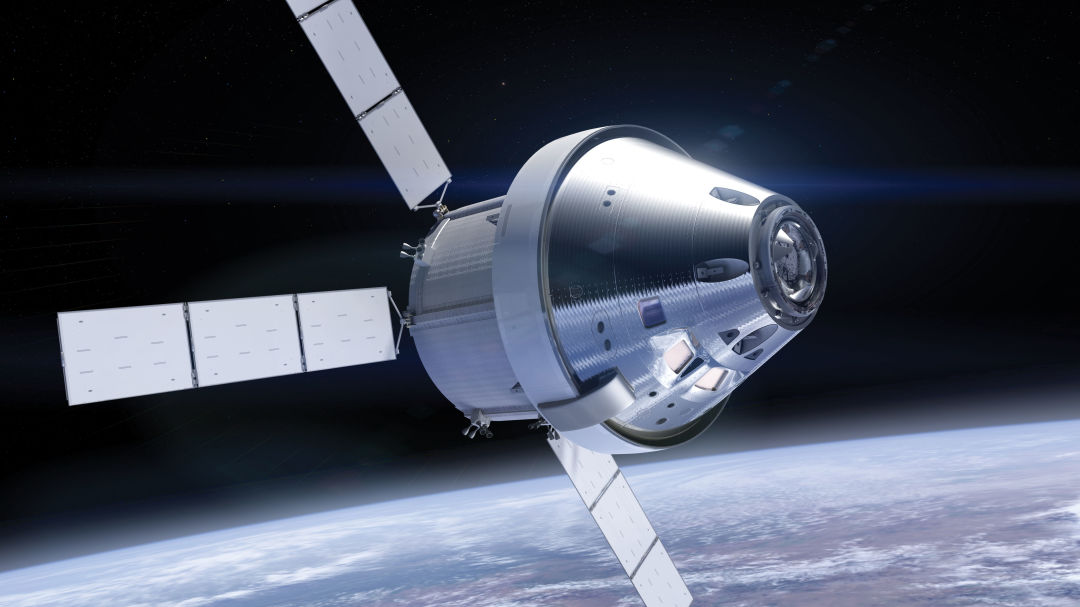
Orion training modules have already been constructed at other facilities around the country.
Image: Courtesy of NASA
Of course, it’s possible that there’s nothing to be done, that it’s already too late. “This is a recurring fear they have down in Houston, one they’ve had for years,” Logsdon says. “It’s tricky because they’re right in a way, but it’s already happened. Houston is not the home of human spaceflight now. Huntsville, Alabama, builds the rockets, and Kennedy Space Center in Florida launches them. But it’s become such a tradition that Houston trains the astronauts and runs mission control, that it’s almost untouchable.”
No one person or entity is to blame. Instead, as Lembeck explains, there has been a mix of factors. “What’s been missing is guidance,” he says. “Whenever Texas congressmen ask Johnson leadership how things are going, they’re told everything is hunky-dory and they believe it. There’s not a main contractor in Houston to tell lawmakers this program or that program needs to stay here in Houston. Nobody is looking closely enough at how this breaks down and what these decisions mean for the JSC.”
Abbey agrees. “Johnson used to be the heart of it all, but the leadership is not as visionary as it was in the past. The guys who started this place thought they were building something that would stand the test of time, and they advocated to ensure the JSC would stay crucial to what was going on, but it’s different now. The center of gravity has shifted in the space program. Johnson isn’t in the middle of it anymore.”
Logsdon also contends that the JSC, which has been slow to accept change, shares part of the blame. “The JSC was a closed culture, impervious to the thought that anybody but them knew anything about human spaceflight when I examined them as part of the Columbia shuttle investigation 15 years ago [after it destructed, killing all seven astronauts on board], and I haven’t seen that change in the years since.”
While Kennedy Space Center has embraced the current climate of commercialization, moving toward becoming a national spaceport and cultivating ties with companies such as Elon Musk’s SpaceX and Jeff Bezos’s Blue Origin, the JSC hasn’t done the same, which could hurt it in the long run.
“There’s an underlying, fundamental question which is, what is the future of government-funded spaceflight after ISS?” Logsdon asks. “Are we on a sustainable path to send humans to the moon and then Mars? If we are, then I think there’s going to be a continued role for government-sponsored spaceflight and for the Johnson Space Center. But it is not inconceivable that the private sector could take over human spaceflight entirely in the coming years, and if that happens, well, the program for human spaceflight might not stay in Houston.”
Hence, conversations like the ones taking place on this rainy May day.
Inside U.S. Representative Gene Green’s office, Mitchell visibly relaxes on a soft brown leather couch, enjoying being off his feet as the day approaches its end. Ellen Ochoa, the JSC’s director since 2012, is retiring tomorrow, and Mitchell is heading home in the morning so he can attend her retirement party. There, he’ll chat with Mark Geyer, Ochoa’s longtime deputy, who’s already been tapped to replace her.
Green, a Democrat who has served for decades, is retiring at the end of his term. The men have known each other for years. There’s no need for Mitchell to go through the spiel, as Green surely knows it by heart. “I’m not going to ask you anything,” Mitchell says, “because you’ve always been there for us.”
“Johnson is too important to not be,” Green says, shaking his head. “We’ve lost out on so many programs that should have gone to the JSC the past few years.”
“Well, you can’t control headquarters,” Mitchell replies.
“You can control the money that controls headquarters, though,” Green shoots back, raising his eyebrows. Everyone nods. Conversation will only get you so far.









